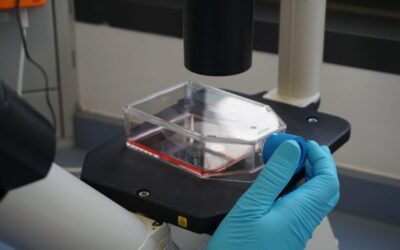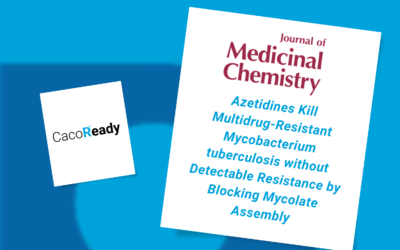Permeability assays are important for understanding how molecules cross biological barriers, assessing both their ability to cross and the mechanisms involved. While drugs are often absorbed by passive diffusion, some molecules can also be substrates for membrane proteins or transporters.
To determine the absorption mechanism, the FDA recommends the use of cell-based models like Caco-2 or MDCKII cells due to their ability to evaluate permeability mechanisms. Also, to ensure the accuracy and reliability of these studies, its guidelines include reference substrates for different absorption mechanisms. In this post, we will discuss the importance of reference compounds, their commonly used examples, and their contribution to successful permeability studies.
What are reference compounds? How do they help interpret permeability assay results?
Reference compounds are well-characterized molecules used as calibration tools to evaluate the performance of absorption test systems. They help standardize permeability assays and provide insights into key aspects such as:
- Absorption classification: Drugs can be classified into high, medium, or low permeability groups based on their apparent permeability coefficient (Papp), which measures the rate at which a substance passes through a cell layer. For example, compounds with a Papp value >10 × 10⁻⁶ cm/s are considered highly permeable, correlating with oral bioavailability >70%. Those with Papp values between 1 and 10 × 10⁻⁶ cm/s exhibit moderate permeability (20–70% bioavailability), while values <1 × 10⁻⁶ cm/s indicate low permeability (<20% bioavailability).
- Evaluating monolayer functionality: High-permeability compounds validate the monolayer’s capacity for passive diffusion, while low-permeability compounds test paracellular transport and monolayer tightness. Efflux transporter substrates provide insights into transporter-mediated active transport mechanisms.
- Predictive insights: The Caco-2 model, for example, is particularly valuable due to its strong correlation with human intestinal absorption. Studies have shown that compounds with high permeability in Caco-2 assays are typically well absorbed in humans.
- Cross-model consistency: By comparing reference compound data across different cell-based models (e.g., Caco-2 vs. MDCKII), researchers can assess the suitability of their chosen system for the specific application.
Concomitant with this classification, reference compounds are used to delineate permeability mechanisms, distinguish between transcellular and paracellular pathways, and ensure assay reliability. The permeability of many NMEs is compared to multiple reference compounds, helping us understand their behavior and predict how they may interact in living organisms.
Commonly used reference compounds
When conducting permeability assays, it is essential to use compounds with well-documented and predictable permeability characteristics. These reference compounds help verify the accuracy of the assay and ensure that permeability results are reproducible. Below are the reference compounds recommended by the FDA, followed by the validated reference compounds we recommend for our products.
FDA-Recommended Reference Compounds
| Compound | Permeability Type | Mechanism | FDA Classification |
| Propranolol | High | Passive diffusion | High-Permeability Reference |
| Metoprolol | High | Passive diffusion | High-Permeability Reference |
| Atenolol | Low | Paracellular transport | Low-Permeability Reference |
| Mannitol | Low | Paracellular transport | Low-Permeability Reference |
| Digoxin | Medium (Active) | MDR1 (P-gp substrate) | Efflux Transporter Substrate |
| Verapamil | Medium-High | MDR1 (P-gp inhibitor) | Efflux Transporter Inhibitor |
| Prazosin | Medium (Active) | BCRP substrate | Efflux Transporter Substrate |
| Ko143 | Medium (Active) | BCRP inhibitor | Efflux Transporter Inhibitor |
Validated reference compounds for our plates
- High-Permeability Compounds: They diffuse easily across cell barriers, making them suitable for high permeability assays. We recommend using metoprolol for our CacoReady permeability assays.
- Low-Permeability Compounds: These compounds typically rely on paracellular transport, making them ideal for testing low permeability. For permeation assays with our products, atenolol is our validated reference compound.
- Efflux Transporter Substrates: These compounds are substrates for drug efflux transporters like MDR1 (P-gp) and BCRP, important for evaluating active transport mechanisms. We suggest the following:
- Digoxin (MDR1/P-gp)
- Verapamil (MDR1/P-gp inhibitor)
- Prazosin (BCRP)
- Ko143 (BCRP inhibitor)
By using these reference compounds, both general and validated for our kits, you can ensure consistency, reliability, and regulatory compliance in your permeability assays. For more information, feel free to ask for our user manual.
Quality Controls: ensure the integrity of the cell monolayer
Ensuring the integrity of the cell monolayer is also crucial to obtaining reliable results in permeability assays when using our validated kits. We recommend two key quality control measures, both of which assess the integrity of the barrier:
- TEER (Transepithelial Electrical Resistance):
Conducted before starting the assay, TEER measurements verify the monolayer’s integrity. High TEER values confirm a tight barrier, ensuring that the results reflect true permeability and not disruptions in the monolayer. - Lucifer Yellow Flux (LY):
Measured post-assay, Lucifer Yellow flux serves as a secondary validation step. This compound permeates the monolayer exclusively through paracellular transport, making it an ideal tracer for identifying potential integrity issues. Any abnormal LY flux may indicate problems such as monolayer disruption or handling errors during the assay, which could affect the accuracy of the results.
Both TEER and LY flux are integral to our recommended protocols, ensuring robust and reproducible results when using our products. For detailed guidance on implementing these quality control measures, refer to our permeability assay protocol.
Conclusion: The importance of reference compounds in permeability assays
In conclusion, reference compounds are an essential part of permeability assays, providing a standardized way to ensure accurate and reproducible results. By selecting appropriate reference compounds, researchers can better interpret permeability data and gain a deeper understanding of how compounds interact with biological barriers. Ensuring monolayer integrity and choosing the right compounds is also fundamental for successful drug permeability testing.
Feel free to contact us for further assistance or to request our user manual, which contains more details on how to effectively use our ready-to-use cell-based plates for your experiments.
References
- Food and Drug Administration (FDA), 2020. In Vitro Drug Interaction Studies — Cytochrome P450 Enzyme- and Transporter-Mediated Drug Interactions Guidance for Industry. U.S. Department of Health and Human Services, Center for Drug Evaluation and Research (CDER). https://www.fda.gov/regulatory-information/search-fda-guidance-documents/vitro-drug-interaction-studies-cytochrome-p450-enzyme-and-transporter-mediated-drug-interactions
- Artursson, P., and Karlsson, J., 1991. Correlation between oral drug absorption and intestinal drug permeability. European Journal of Pharmaceutical Sciences, 1(3), 224–234. https://pubmed.ncbi.nlm.nih.gov/1673839/
- Yee, S. K., 1997a. Permeability of drugs across the gastrointestinal tract: methods for evaluation. Journal of Pharmaceutical Sciences, 86(2), 131-134. https://pubmed.ncbi.nlm.nih.gov/11274897/
- Artursson, P., et al., 2001. Mechanistic studies of intestinal drug absorption. Advanced Drug Delivery Reviews, 46(1-3), 43-57. Available at: https://pubmed.ncbi.nlm.nih.gov/9210194/
- Lennernäs, H., et al., 1996. The intestinal absorption of drugs: Key considerations in drug development. International Journal of Pharmaceutics, 127(2), 125-133. https://www.diva-portal.org/smash/get/diva2:1257421/FULLTEXT01.pdf
- Panse, N., & Gerk, P. M., 2022. The Caco-2 Model: Modifications and enhancements to improve efficiency and predictive performance. International Journal of Pharmaceutics, 624, 122004. ISSN 0378-5173. https://www.sciencedirect.com/science/article/pii/S0378517322005592





